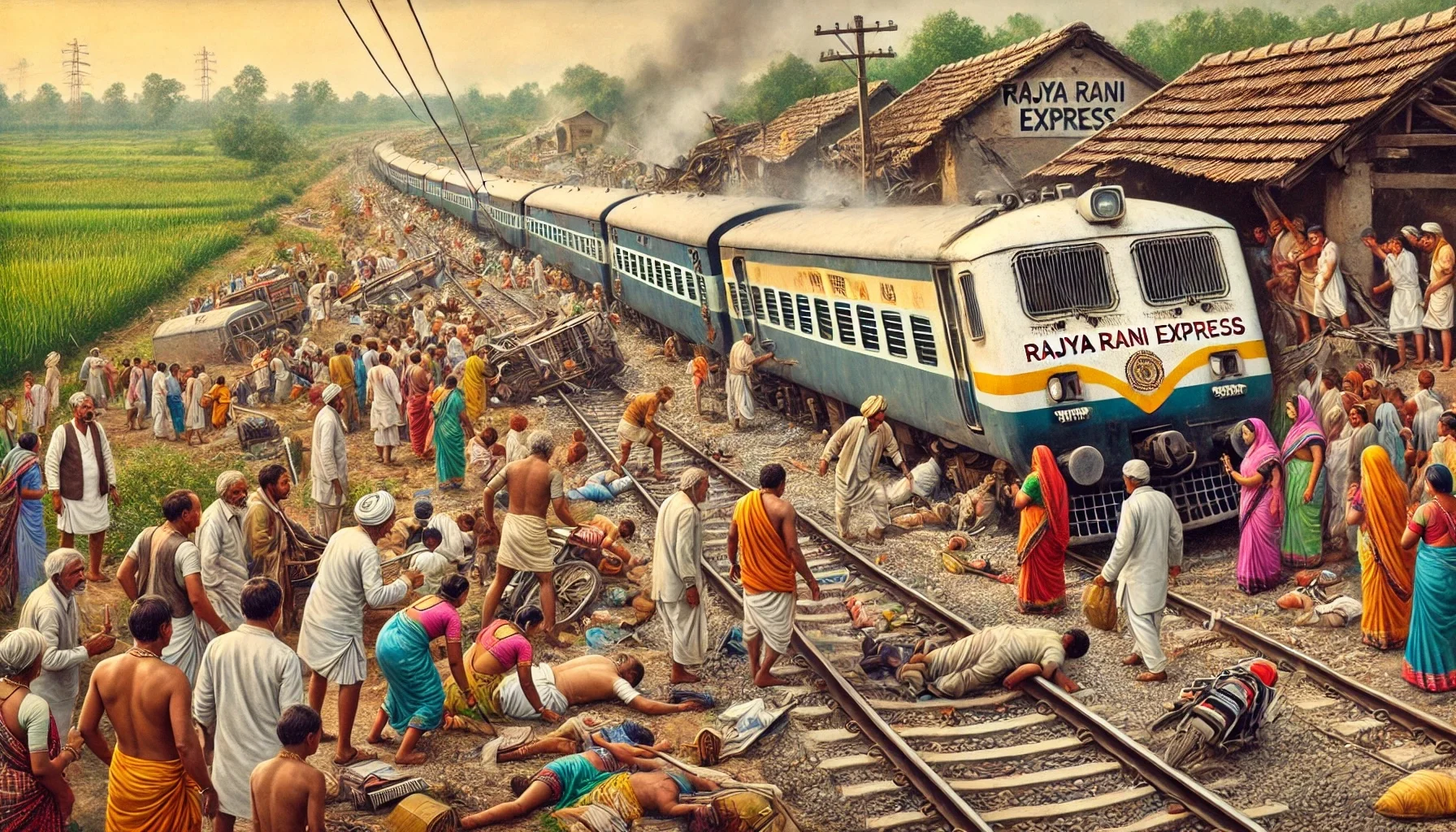
The Dhamara Ghat Train Accident
by: The Calamity Calendar Team
August 19, 2013
A Day of Devotion Turns to Tragedy
On the morning of August 19, 2013, Dhamara Ghat, a small railway station nestled in the rural expanses of Bihar's Khagaria district, was abuzz with activity. Hundreds of pilgrims, dressed in traditional attire, thronged the station, bound for the nearby Katyayani temple. It was a day of religious observance, and the air was thick with devotion and anticipation.
As the clock approached 10:45 AM, the station's platforms were overflowing with devotees. The Saharsa-Patna Rajya Rani Express, a train that was not scheduled to stop at Dhamara Ghat, hurtled down the tracks. Unaware or perhaps dismissing the danger, many pilgrims stood on the tracks, caught in the fervor of their journey.
The Collision
At approximately 10:50 AM, the express train, traveling at high speed, bore down on the crowded station. The screech of metal against metal, followed by the sickening impact, shattered the morning calm. The train collided with the crowd, unable to halt its momentum until it had traveled some distance beyond the station.
In an instant, a scene of devotion transformed into one of horror. Bodies were strewn along the tracks, cries for help filled the air, and the once jubilant crowd was plunged into chaos. Local villagers and surviving passengers sprang into action, pulling victims from under the train, administering first aid, and comforting the injured.
The Immediate Aftermath
Emergency services were quickly alerted, but the remoteness of the location meant that local efforts were crucial in the first moments after the accident. By 11:00 AM, news of the disaster had spread, prompting a broader emergency response. The injured were transported to nearby hospitals, while the station itself became a temporary triage center.
The death toll was grim: at least 28 people lost their lives, and around 24 sustained injuries. The station, overwhelmed by the number of casualties, echoed with the grief and confusion of those left behind.
Thanks for subscribing!
The Investigation and Government Response
In the wake of the accident, the Indian government announced ex-gratia payments for the families of the deceased and those injured. An investigation was launched to uncover the causes of the tragedy and to identify any lapses in safety protocols.
The findings were stark. The primary cause of the accident was a lack of proper crowd control and inadequate infrastructure at the station, which was ill-equipped to handle such a large influx of people. The report emphasized the urgent need for better safety measures at smaller stations, particularly those that experience significant traffic during religious events.
A Call for Change
The Dhamara Ghat tragedy prompted Indian Railways to take a hard look at its safety practices. In the months and years following the accident, several measures were implemented to prevent similar disasters. These included improved communication systems, more robust crowd control practices, and increased awareness campaigns for railway safety among the public.
Moving Forward
Today, Dhamara Ghat stands as a somber reminder of the events of August 19, 2013. While the scars of that day remain, the changes enacted in its aftermath offer a glimmer of hope. Indian Railways' commitment to enhancing safety protocols and infrastructure aims to ensure that such a tragedy never happens again.
The Dhamara Ghat train accident serves as a poignant example of the importance of vigilance and preparedness. It underscores the need for continuous improvement in safety measures and reminds us of the delicate balance between tradition and modernity in a country where both often coexist side by side.
As we remember the lives lost and the families forever changed by this tragedy, we also recognize the steps taken to protect future generations of travelers. The story of Dhamara Ghat is one of sorrow, but also of resilience and the enduring human spirit.
Stay in the Loop!
Become a Calamity Insider and get exclusive Calamity Calendar updates delivered straight to your inbox.
Thanks! You're now subscribed.